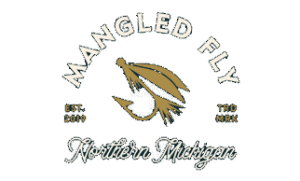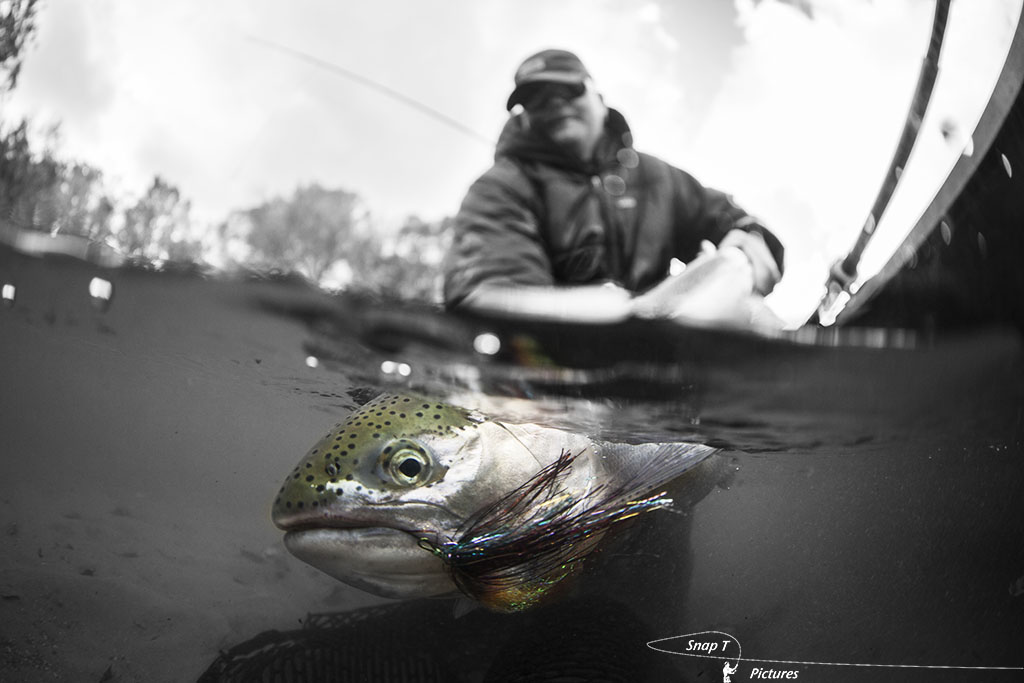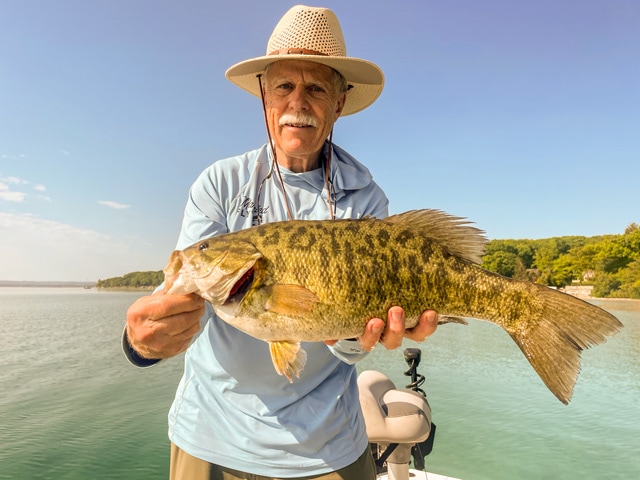Picture of the Day – Fall Brown Trout
Kean O. with a great fall brown trout in epic colors. Great day on the river yesterday, seeing the old trout water one more time before old man winter locks her in. Streamer fishing was pretty consistent, while not too many would actually put the streamer in there mouth, plenty came out and played with it. Great job Kean getting the couple when you had the chance.
Picture of the Day – Hoodie and Steel
Dan C. with a super silver fall steelhead from the Manistee River. Dan also sporting a Mangled Fly Hoodie. (MFM green can barely be seen, but it’s there) With the forecast of 40’s and mix (rain/snow) the down puffs and hoodie will be a staple the rest of the year. Steelhead fishing is pretty darn good right now. Thank you Dan for a great day.
Tradition
: a way of thinking, behaving, or doing something that has been used by the people in a particular group, family, society, etc., for a long time
Now, Steelhead fishing, it’s all about the tug on a well swung fly, getting that aggressive fish to move to your offering. It’s the wait, the eternal wait, watching that line swing in front of you, slowly working its way through a greasy seam on its way to the hang down. It’s about hoping that the tension in the line increases and I mutter some of my favorite words, “hmmm, that feels funny”. It’s about the jolt of electricity and all your synapses going ape shit as the rod jolts forward, the drag sings it’s fateful tune and you watch a bar of silver leap it’s way downstream.
If you see me fishing for steelhead with any other method, I’m with one of my guide buddies, boat and we are “checking out new water”. There have been more than one occasion that I have been introduced to a fellow fisherman and they look at me and say “Oh, you’re that dude who is always swinging flies at_ _ _ run”. It’s how I was taught to fish for our magnificent foe, Mr/Mrs steelhead, which is a tradition we borrowed from my/our ancestors across the pond for fishing Salmo Salár, aka the leaper.
If you see me fishing for steelhead with any other method, I’m with one of my guide buddies, boat and we are “checking out new water”. There have been more than one occasion that I have been introduced to a fellow fisherman and they look at me and say “Oh, you’re that dude who is always swinging flies at_ _ _ run”. It’s how I was taught to fish for our magnificent foe, Mr/Mrs steelhead, which is a tradition we borrowed from my/our ancestors across the pond for fishing Salmo Salár, aka the leaper.
We usually learn our fishing from family and friends, most likely your father or someone else’s father. Maybe a brother. We are taught the skills to catch fish by these mentors and if you are lucky, the why’s too. My father took me fishing whenever he could manage when I was a kid. He isn’t a fly fisherman and I did not learn to fly fish until I was in my late 20’s when I moved to Wyoming and go into cahoots with some guides. I had not fished in a long time, but it was in my soul from the times my dad and I went. I think of him often when I am fishing and thank him for passing on my for love of the outdoors and tell him so frequently. My love of the brown stuff comes from him too- he once told me that while having some J&B, “Scotch is an acquired taste, son”. I’ve certainly acquired it!
I heard lately that we stand on the shoulders of the great fisherman who have come before us and we should honor them by our actions a stream. We should also honor those great distillers who have taught this latest generation of young bucks. I appreciate some of the innovations that we are seeing in the whiskey world, but we should never forget where it all came from. This past summer, of the greats left our world. Elmer T. Lee, we miss you. May your apprentices and disciples please you.
If you see some Elmer T. Lee on the shelf of your local, buy it, because the supply will all too soon dry up. It’s a full bodied, traditional mash with a tempered and restrained heat I have come to expect from a well made Kentuckian beverage. Soft caramel notes with hints of honey with a twinge of smoke and spice on the finish.
You can thank me later by offering me a wee dram stream side. I will be taking my own advice soon and buying a few bottles and hiding them in the basement, only to bring out for special occasions or for friends who understand, for hoarding whiskey is a tradition too!
Slainté.
Big this Year
Better get ready to rumble this year, as fish are bigger than normal on the West side. Pictured is Jon with a big boy from the Manistee River from this Friday, Oct 11th. Two-Handed rods are start to come out, as heavy angling pressure is pushing the fish off of the gravy train and into the spots I call home.
New Go Pro Studios
With an off day today from the river, did my usual run around, and then caught up on emails, and household chores. One of the emails I had in that long scroll of inbox was from GoPro, with a link to the new studio download. The new studio is a definite upgrade.
- NEW GoPro Edit Templates make it easy to create GoPro-style videos
- NEW Trim, edit and mix video clips
- NEW Add titles, music, audio tracks and more
- NEW Fisheye adjustment control
- NEW Adjust video playback speed for fast or slow motion
- NEW Export video still frames at full resolution
So I took the new software for a quick spin. The GoPro Studio is by no means as good as FinalCut but for just looking and doing a quick edit of some GoPro footage it does some really cool stuff.
I really liked the fact that I could export still images from video. Below is an example, as we continue to play around with the Muskie footage we shot this past month. Also another great feature is playing with the fisheye adjustment. Haven’t tried that but plan on it. Anyway check out the download if you self edit. Link is above.










